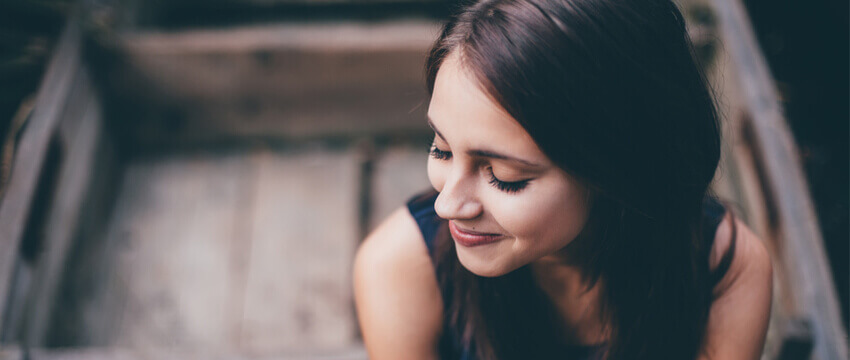There are so many people willing to undergo any cosmetic surgery, like rhinoplasty, just to get their desired look. This is true because according to surveys, hundreds of thousands of women (and men!) undergo nose job surgery every year. This fact makes rhinoplasty one of the top cosmetic surgeries in the world. Sounds enticing, right? If you are going to push for your own nose job surgery, maybe you should know the common and rare rhinoplasty risks so that your safety and satisfaction of the procedure would not be limited by them in the future.
Rhinoplasty: A quick overview
Rhinoplasty, commonly known as nose job surgery, nose reshaping, or nose surgery, is the procedure that alters the physical and functional condition of the nose. According to the International Society Of Aesthetic Plastic Surgery or ISAPS, rhinoplasty can:
reshape the nose to reduce or increase the size
- remove a hump to straighten the nose
- change the shape of the nasal tip or nose bridge
- narrow the span of the nostrils to make it look smaller
- change the angle linking the nose and upper lip
- relieve breathing difficulties in conjunction with other necessary surgery
- help correct birth defects like cleft palate to aid in respiration and nutrition
Your nose job surgery can be done using local or general anaesthesia, depending on the condition of the patient and the amount of alteration that he or she needs. It is more commonly treated as an outpatient surgery procedure, but if the surgeon sees the need for you to be monitored closely after the nose job surgery, he may request you to stay admitted overnight.
Rhinoplasty risks: The common and rare outcomes of surgery
As they say, no surgery is exempted from potential risks and complications. No matter how experienced a surgeon would be, there will always be a small percentage of the possibility that unwanted complications may arise during and after surgery. What is important at the end of the day is that you and your doctor did everything right to avoid these complications and that the results of the nose job surgery are so much more essential than the potential complications you may face while doing it. This is the reason why a rhinoplasty patient undergoes a surgery armed with the realisation that this procedure, despite its risks and unforeseen complications, is going to make her feel and look better.
Common rhinoplasty risks
Like any other surgery, there are common risks that surgeons always tell their patients that may happen during or after the operation.
Bleeding. Because incisions and cuts on the skin, bones, and cartilages are performed during the nose job surgery, it is common that surgeons would include bleeding as an effect of the procedure. It is only normal to bleed during the first 12 hours after surgery. It may also be common for rhinoplasty patients to complain of bleeding 1 to 2 days post-surgery, and this is because the nose has so many small blood vessels that even the procedure is a ‘bloody’ one. Because of this fact, even if it is somewhat burdensome, it may be required for the patient or someone to help you carefully change the surgical dressing again and again during your recovery period. Your surgeon may advise that it is still normal for you to have a pinkish, blood-tinged nasal discharge coming down from your nose and throat for the first 3-4 days until it gradually subsides. However, if you notice that bleeding is more than usual after this time (seeing fresh blood instead of blood-tinged discharge), call your surgeon or rush to the hospital and request for an immediate follow-up. At home, you must immediately lie down and elevate your head on 3-4 pillows. Cold compresses and ice packs applied on the back of the neck and on the forehead and eyes may also help. A prescribed nasal decongestant, like Afrin, can help with the discharges.
Infection. Like bleeding, all surgeries have this as a given potential risk. Because you are exposing the internal structures of your nose out in the open during surgery, and there are incisions that would leave fresh wounds postop, the bacterial or viral invasion may be possible, especially for patients with a weak immune system. Signs of infection that one nose job surgery patient may notice include fever, bad-smelling nasal discharge, and unusual pain, redness, and swelling on the site. Although the last three symptoms of infection may be common after surgery and are just normal if you feel that there is something wrong and your gut feel wants you to seek medical consultation, do it. It is better to be wrong and have a doctor check up on you than to set it aside and wait for the infection to spread until it is too severe to be controlled.
Anaesthesia adverse reaction. During your rhinoplasty surgery, your surgeon may use local anaesthesia with sedation or general anaesthesia depending on your need and the complexity of the procedure. The main purpose of this is to relieve you from feeling any pain during the procedure, as well as keeping you calm. Local anaesthesia with sedation is used for patients who need minor changes on their nose. During the procedure, the patient’s nose (not the whole body) will be numb, and you feel somewhat sleepy or groggy and relaxed (due to the intravenous sedation). General anaesthesia, on the other hand, makes you fall asleep and remain unconscious during the whole procedure. This is preferred by surgeons if the operation is complex and would run for a bit longer, and patients as well so they would just sleep during the entire time that they are on the operating table. With these two options, a patient may have an adverse reaction during and after the procedure. Some rhinoplasty patients who were administered with local anaesthesia and sedatives may have chemical reactions that would allow them to involuntarily move during their extremities during the surgery, something that would definitely affect the nose job surgery. There are also cases where, due to the high cost of using general anaesthesia, patients would opt to get local anesthesia even for their complex procedure, only to have sore muscles and full bladder during the lengthy procedure which makes them distressed even under the effects of anaesthesia. Meanwhile, getting general anaesthesia also has its fair share of complaints as well. Because patients need to be attached to a breathing apparatus during the procedure, a breathing tube is passed through the mouth going to the trachea so that breathing issues during the procedure will be avoided. So it is common for patients to complain of having a sore throat after. Some patients also complain of nausea and vomiting, symptoms that would largely affect the results of the nose job surgery. Rhinoplasty risks that increase the pressure on the nose would cause more bruising, swelling, and bleeding on the operative site. Discomfort may now be felt as the anaesthesia subsides. If the secondary adverse reactions of anaesthesia are becoming more apparent, it is always best to follow-up with your doctor to make sure that you are safe all throughout your recovery period.
Other rhinoplasty risks
Some of these rhinoplasty risks and complications may be part of the first three mentioned earlier, while some are due to the natural way of how the body heals and copes with a surgery.
Difficulty breathing. Because the nose is still swollen post-surgery, patients find it difficult to breathe through their nose. Some even complain of pain and discomfort with stuffiness caused by the nasal packing or splints that were inserted to the nose to prevent bleeding and absorb the nasal discharge. Although this effect is not really a complication and is considered a temporary condition, there are patients who, after months following the surgery, still complain of breathing disturbances. Consult your doctor because there may be times when scar formation inside the nose or numbness may cause this airway obstruction, making it difficult to breathe.
Numbness or loss of sensation inside or outside of the nose. As mentioned earlier, the sensation of the nose is lost during the procedure so that no pain or discomfort may be felt by the patient during the nose job surgery., however, there are instances wherein the patient experiences on-and-off loss of sensation even months after the surgery. It may be because the nose lost some blood vessels that supply the blood to these areas, making the site, especially the nasal tip, a bit numb. However, most patients can attest to the fact that this complaint may last for a few months but just as the nose is gradually healing, as time passes, the sensation eventually comes back.

Asymmetry of the nose. In an attempt to improve and enhance the shape and profile of the nose, there is a rhinoplasty risk of getting an asymmetric nasal structure. Your surgeon may advise you that the final results of your surgery may only be fully appreciated after at least a year because of factors like the nose is still swollen, the implants may not have positioned properly yet, there are scars that need to lighten or fade, or the patient has extremely high expectations on the surgery. Whatever the reason, consider this fact: There is no perfect nose, not even in plastic surgery. Yes, that is correct. What your rhinoplasty surgeons aim for every nose job surgery result is for the outcome to suit and be proportioned to your face. The earlier you accept that fact, the more it is easier for you to wait for the tie when the nose reaches its highest and truest transformation.
Need for additional or revision surgery. This risk is connected to the one mentioned before it. If the surgeon is not skilled or experienced enough or the patient complains of having an asymmetric nose, there is a big possibility that the surgeon may recommend undergoing a revision rhinoplasty. This is to correct the unforeseen problems that surfaced after the procedure. However, there is also a possibility that one rhinoplasty surgery may not be enough to get your desired look. So it doesn’t matter if you encountered complications or not, your surgeon may recommend you take another nose job surgery, with rhinoplasty risks and all, so that you and your surgeon can achieve the nasal profile you may want to achieve.
Septal perforation. If you have had direct trauma to your nose and needs a rhinoplasty to correct the damage, your surgeon may advise you that though the nose job surgery may be able to correct the function and appearance of your nose, the septal perforation (or a hole in between your nostrils) may be a bit difficult to address with just one surgery. A prosthetic plug to cover the hole may be needed and this may have to wait until the swelling and wounds of the nose subside.
We hope that these explanations in regard to the common rhinoplasty risks and complications allow you to think and reflect about getting a nose job surgery. There is nothing wrong with wanting to be pretty and feeling confident about your physical appearance. However, it is more important to maintain your safety and quality of life than to risk everything and experience several unwanted complications during your beauty journey. The best way to address any beauty concerns is to consult your trusted doctor before pushing through any surgical or nonsurgical cosmetic procedures. The experiences and expertise of your doctor are reliable enough to make you feel guided and informed about the highs and lows of your cosmetic journey or path, like undergoing rhinoplasty.


 reshape the nose to reduce or increase the size
reshape the nose to reduce or increase the size
Recent Comments